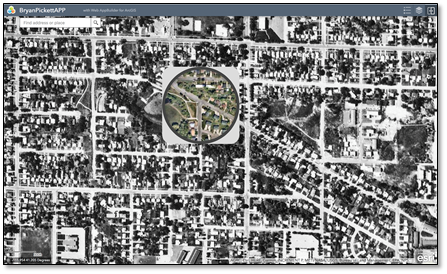- Home
- :
- All Communities
- :
- Industries
- :
- Public Safety
- :
- Public Safety Blog
- :
- Next Generation 911, A Long-Distance Sprint
Next Generation 911, A Long-Distance Sprint
- Subscribe to RSS Feed
- Mark as New
- Mark as Read
- Bookmark
- Subscribe
- Printer Friendly Page
- Report Inappropriate Content
Next Generation 911, A Long-Distance Sprint
By Mike King, Global Emergency Call Taking and Dispatch/FirstNet Industry Manager, Esri
In 1980, a few days after graduating from the police academy, I responded to the homicide of a corrections officer named Bryan Pickett.[1] (Bryan graduated from my high school a year before me.) The only address information the 911 caller provided was, " . . .in Sullivan's Hollow."

Pickett was found lying in the middle of the road with a gunshot wound to the head—his vehicle was still running.
Then (40 years ago), we relied on the Polk Directory[2] for address information, but it rarely had place-names or aliases to help. If you were unfamiliar with your surroundings, finding the location became much more challenging.

Pickett's killer was never officially identified or charged, and I often think about him, wondering if better location information could have reduced the time it took to get first responders to the scene. He probably wouldn't have survived the shooting, but his assailant might have been apprehended.
Location image: This 1980 image is courtesy of the Utah AGRC Open Data Portal. Using ArcGIS, the image was geolocated on a topographic map, and a swipe map of 2018 imagery, courtesy of Nearmap, was added.

Scan the QR Code to view a web application on your mobile device.

[1] UTAP Cold Case image courtesy of the Utah Attorney General's Office.
[2] Weber County Polk Directory image, Digital Collections, Stewart Library, Weber State University.
After my law enforcement career, I was fortunate to join the Esri public safety team, a group of retired police, fire, emergency management, and national security commanders who maintain their passion for ensuring public safety. My focus has evolved to spending more time with the members of the emergency call-taking industry—the initiators of all public safety response.
As I have participated in discussions around the world on the Next Generation 911 (NG911) initiative, I marvel at how far we've come and how much still needs to be done. Migrating the antiquated analog systems of the past to powerful digital solutions that consume large amounts of data in real time is a daunting task, but it is a task worth doing. Providing first responders with authoritative address data they can follow and trust is paramount.
The promise of improved 911 caller location has been the focus of public safety telecommunicators, national trade organizations, and federal oversight agencies for a long time. Each collaborative effort brings increasing hope that we are making things better. In some arenas, the vision of "what could be" has now become the reality of "what is."
At Esri, we're working tirelessly to help our CAD/911 partners embrace geographic information system (GIS) capabilities that offer best practice architecture for address database creation and management. We're guiding agencies around the world as they migrate their 2D geographic data to 3D, preparatory to z-axis information coming to the Public Safety Answering Point (PSAP) center. Our easy-to-configure web applications are used globally, including on the FirstNet network.
Now, there's a game-changing way to access accurate smartphone device location and additional emergency data from Apple, Uber, other apps, and connected devices. Please join the experts from Esri, RapidSOS, and GeoComm as they discuss the RapidSOS NG911 Clearinghouse. You can register here.
Just before my retirement, I read a quote by Theodore Roosevelt in the office of an assistant chief of police. Recently, I heard it referenced during the funeral of Senator John McCain. I think it fittingly applies to those of you who are trying to bring NG911 to fruition. I'll close with an excerpt from Roosevelt's speech, Citizenship in a Republic.[1]
"It is not the critic who counts; not the man who points out how the strong man stumbles, or where the doer of deeds could have done them better. The credit belongs to the man who is actually in the arena, whose face is marred by dust and sweat and blood; who strives valiantly; who errs, who comes short again and again, because there is no effort without error and shortcoming; but who does actually strive to do the deeds; who knows great enthusiasms, the great devotions; who spends himself in a worthy cause; who at the best knows in the end the triumph of high achievement, and who at the worst, if he fails, at least fails while daring greatly, so that his place shall never be with those cold and timid souls who neither know victory nor defeat."
Learn more about Esri's efforts in emergency call taking at go.esri.com/911
Register for the NG911 device location webinar Accessing Location Information from Smartphone Devices.
Download the eBook on 5 Ways GIS Empowers Next Generation 911.
[1] Citizenship in a Republic, https://en.wikipedia.org/wiki/Citizenship_in_a_Republic.
You must be a registered user to add a comment. If you've already registered, sign in. Otherwise, register and sign in.